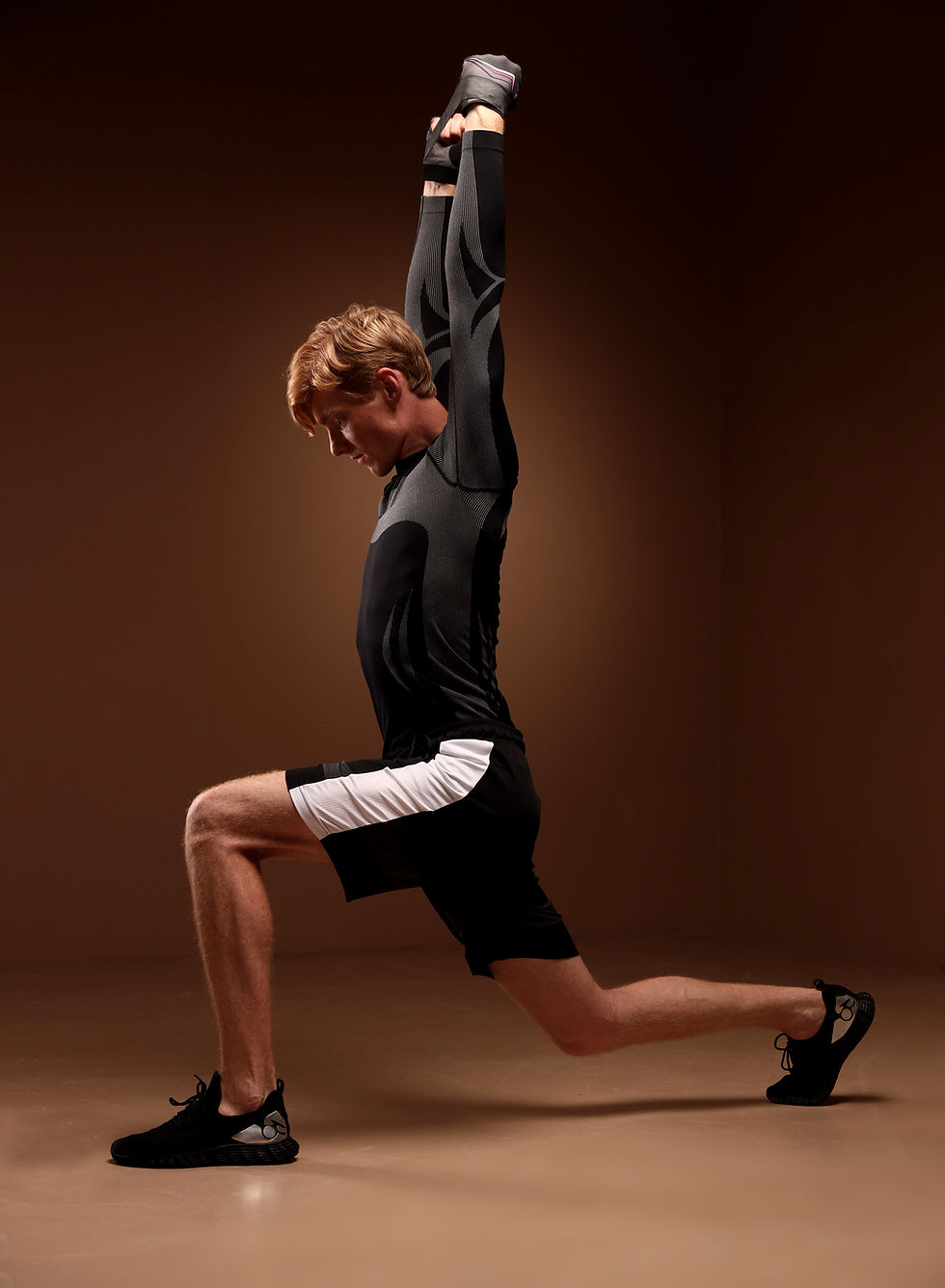How Do I Strengthen My Neck?
- Kacy Seynders, PT, DPT
- Nov 29, 2019
- 3 min read
While the neck may not be an area of focus in the gym for many of us, neck pain and fatigue can put a damper on bike rides and swims. Keep reading to learn the basics of neck posture and endurance, as well as a few simple exercises to keep your neck healthy!
Relevant anatomy
The cervical spine is made up of 7 vertebrae, and, lucky for us, is the most mobile portion of the spine. This allows us to scan our environment and place our gaze where we need it. There are several layers of muscles on both the front and back of the neck. Some play more of a stability role, while others are considered “global movers”, and produce the movement needed to flex, extend, side bend, and rotate the head. We will focus our attention on the stabilizing muscles, as those are the ones we need to train to improve postural endurance and quality of movement.
The deep neck flexors are the “core” of the neck, playing an equivalent role to the abdominal muscles. These endurance-oriented muscles are located in the front of the cervical vertebrae, and they primarily function to maintain upright neck posture. Proper function of the deep neck flexors is essential to avoid that “heavy head” feeling at the end of bike rides or fatigue while swimming. Poor deep neck flexor activation can also cause over-utilization of the bigger muscles of the neck, such as the upper trapezius, levator scapulae, scalenes, and sternocleidomastoid, resulting in myofascial pain and tension.

Posture
The most common postural abnormality observed among the general population is termed “forward head posture”. This is where the lower portion of the neck is pitched forward, requiring the upper portion and the head to extend to keep the eyes level. In this position, the muscles on the back of the neck are lengthened, and those on the front shortened. This posture also increases the demand on the muscular system as it works to control the ~10 pound head. Just think of the difference in difficulty between holding a 10 pound medicine ball close to your chest vs. with outstretched arms.

Photo credit: Physiopedia.com
Okay, now that we know why the deep neck flexors are important, let’s go over how to build a better “core”.
The Chin tuck
The chin tuck is the most basic exercise for learning to activate the deep neck flexors. This is done lying down in order to minimize activation of the surrounding muscles. Start by trying to reach your neck “long” and gently pressing your head into a pillow or towel. Next, bring your chin down towards the front of your throat, being careful not to lift the head. Hold briefly for 3-5 seconds, and then return to the starting position. Complete 10-15 repetitions, progressing by holding the chin tuck position for longer.

Photo credit: Hep2go.com
Progression: Quadruped
Once you master the chin tuck, it is time to move the exercise into a more challenging and functional position. You will start on your hands and knees, with your hands underneath your shoulders and knees directly under the hips. Complete the same “chin tuck” motion here, being careful to maintain alignment with the neck and the rest of the spine. In the clinic, I will place a dowel on my patient’s back and cue them to maintain contact with it at the head, mid back, and lower back. Similarly, complete 10-15 repetitions holding for 5 seconds until it gets easy.

Physiotec.com
Progression: Quadruped w/ rotation
Then, we need to add in dynamic movement to this exercise to train your body to maintain good cervicothoracic posture while moving the head and arms. Now, practice rotating your head to each side while maintaining the chin tuck. In the same hands and knees position as described above, turn your head to each side, being careful not to let the head drop or over extend. Keeping the eyes fixated straight down toward the floor can help.

Physiotec.com
As you get better, you can also extend one arm at a time either forward or out to the side. You can even mimic swimming, reaching one arm forward and practicing rotating the head to the opposite direction (similar to breathing).
I hope this provides some direction for improving neck posture and postural endurance while you’re out training. Feel free to let me know if you have any questions!
Keep going, you’ve got this!
Kacy Seynders, PT, DPT
.jpg)




Comments